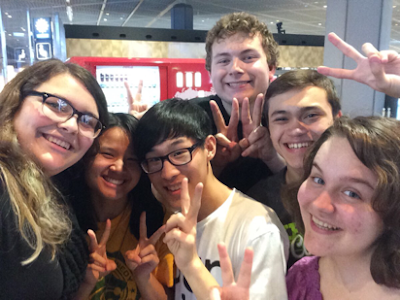Pets in America are very common. They range from poisonous snakes and spiders to parrots to huge purebreed dogs. Pets are kept because people want a companion, or some type of animal to take care of. Americans often have large pets in their homes, since they generally have larger homes than people in Japan. Some people in America (who own large areas of land) even have huge pets, like camels, cows, or even buffalo. The most common pets in America are dogs, cats, rats, rabbits, fish and reptiles. When I was younger, I had two big dogs and a hedgehog.
In recent years, pets have also become more popular in Japan. Because Japan has much smaller spaces for housing, smaller pets are vastly more common than larger pets. In the country, where bigger houses are built, bigger pets can be found, such as larger breeds of dogs. Smaller pets are much more common in the city. These small pets are also easier to take care of than bigger pets would be.
There are many types of animals that are kept as pets, such as small dogs (chihuahuas, pugs, miniature poodles and other miniature breeds) cats, and fish. Hairless cats are common because they don’t shed, and anyone can own one even if you have a cat allergy. Stag beetles and beta fish have little to no maintenance to be kept, so they are popular with people who want pets but don’t have much time to care for them. Breeds of hamsters, flying squirrels, chinchillas, chipmunks and Netherland Dwarfs (tiny rabbits) are kept because they are cute and can easily be kept in a cage. Ferrets and Chinese rats are generally more intelligent, and therefore more high maintenance, but for people who are willing to care for them, they are great pets.
Rare pets in Japan include Fennec foxes, wallabies (small kangaroos), alligator snappers, brush-tailed possums, raccoons, prairie dogs, Skunks, hedgehogs, armadillos, and even iguanas. These pets are found kept both in the city and the country, but they it takes lots of different types of intensive care to keep them healthy, so they’re not in very high demand. Still, these pets are bought because they’re rare. Fennec foxes are super cute, but other pets like the alligator snappers are purchased to seem intimidating. Nothing is cooler than having and living with a dangerous rare pet. A lot of these pets (such as wallabies or armadillos) are kept by people who live in the country. These larger pets can’t be kept in the city; they need more space to be comfortable.
In Japan, pet stores can be much, much smaller than those in America. I saw one in Shinjuku on a street corner. It only had twelve dogs and cats in tiny cages on display, and the entire space was only a few meters wide. It was pouring (it was the rainy season, after all), and a young couple huddled close together under their umbrella, oohing and awwing at how adorable the puppies and kittens were. A few people who didn’t have umbrellas went inside for a short time to look at baby animals instead of braving the rain.
Another pet store I saw was much larger. It was in Aeon (pronounced ee on) mall, and it had more variety of animals. Half of the store was shelves stocked fully with pet toys, outfits, and food of various kinds. The other half of the pet store was the animals themselves. It was mostly many breeds of dogs and cats, such as wiener dogs, tiny poodles, calico cats, hairless cats, and tabby cats. The wiener dog seemed relentlessly shy, and wagged its tail slightly from between its legs whenever someone tried to pet it. The hairless cat sat tall on his haunches, looking down on all who watched him. A scruffy puppy with curly brown hair bounced around its cage, playing with a squeaky toy. A tiny striped kitten laid on its back and peeked at all the people looking at her. Her huge green eyes captivated a large audience, and I heard more than one child begging their parents to play with it or buy it.
This is a picture of the cute little kitty:
My host sister in Japan bought her pet dog (Cocoa, a super fluffy white poof) in that pet store in Aeon a few years ago. Cocoa is house trained and very obedient. They taught him to fall over and play dead when they say “bang bang.” He wears a pink and blue striped sweater, and every 20 minutes or so, my host family would lint roll the white hairs Cocoa shed off the sweater. Like Cocoa, many pets in Japan are loved and cared for by their owners.


